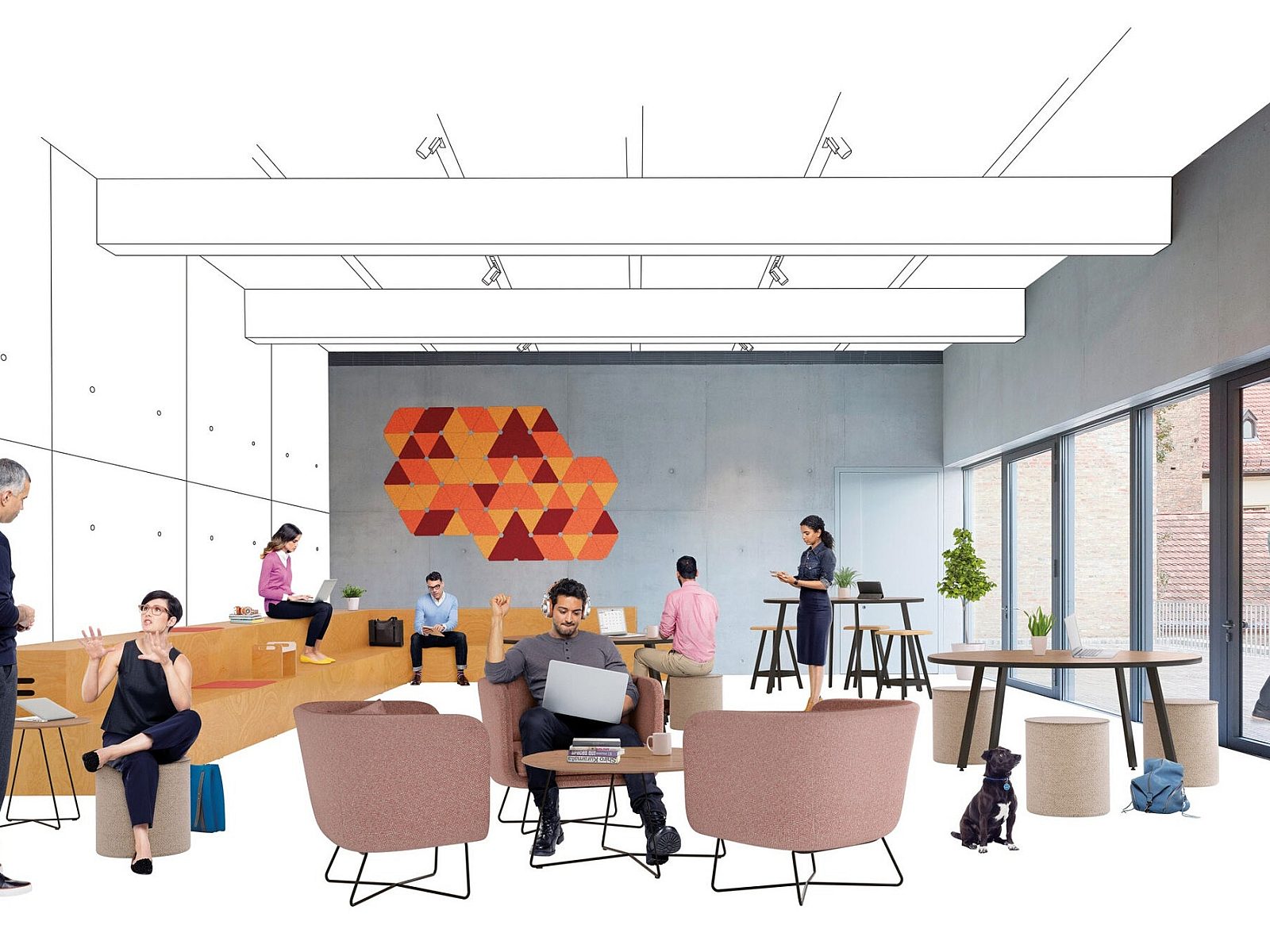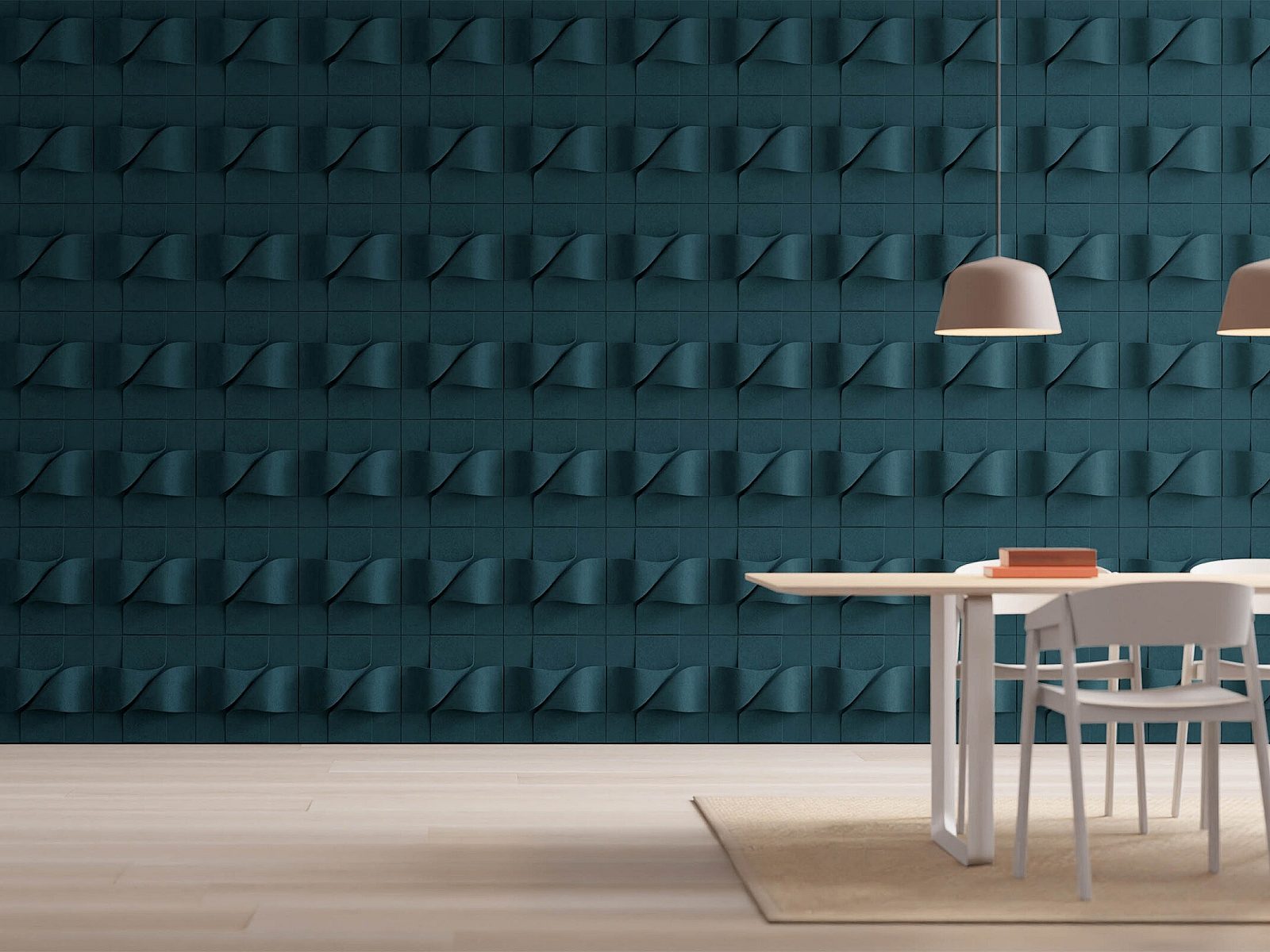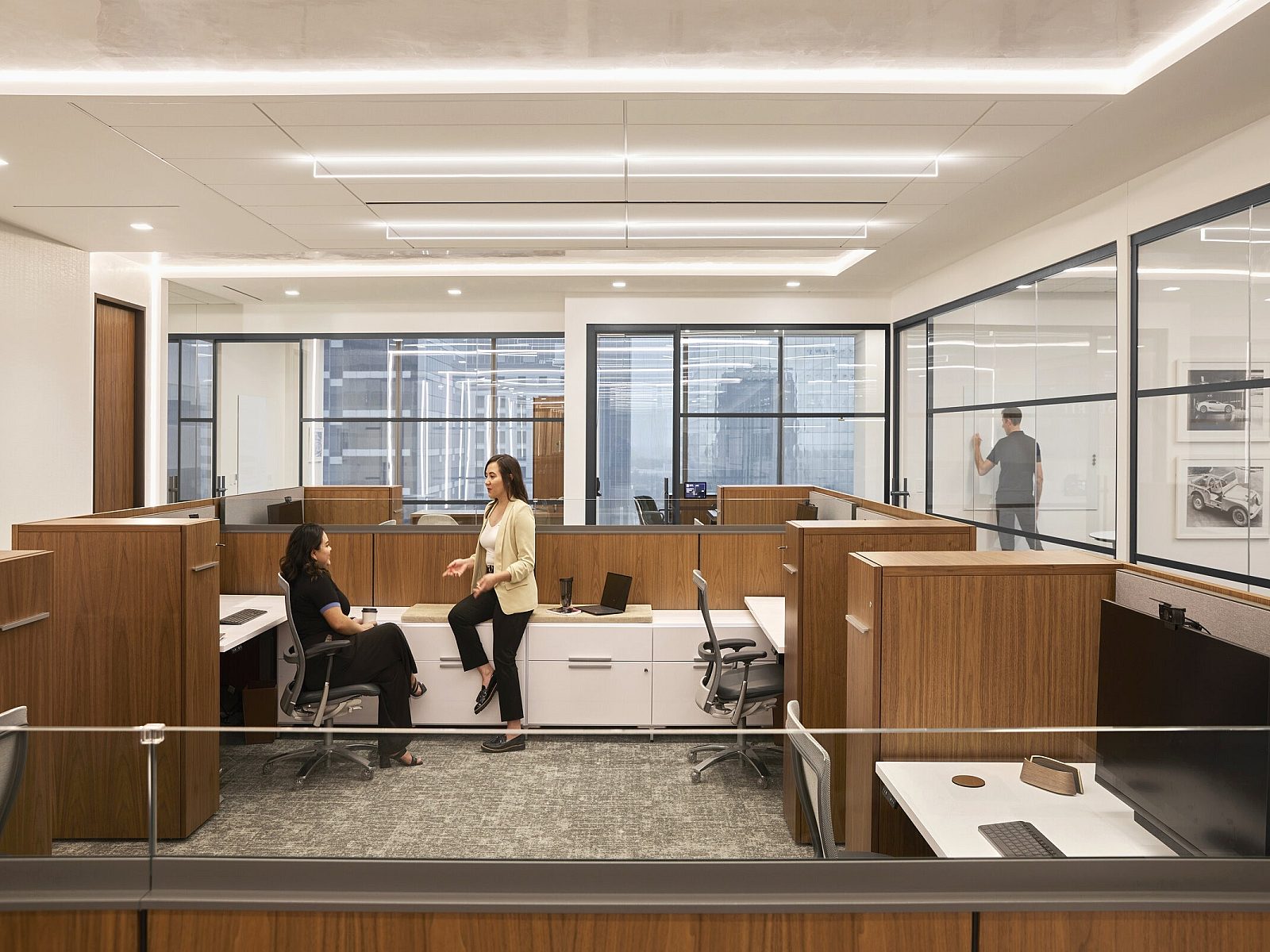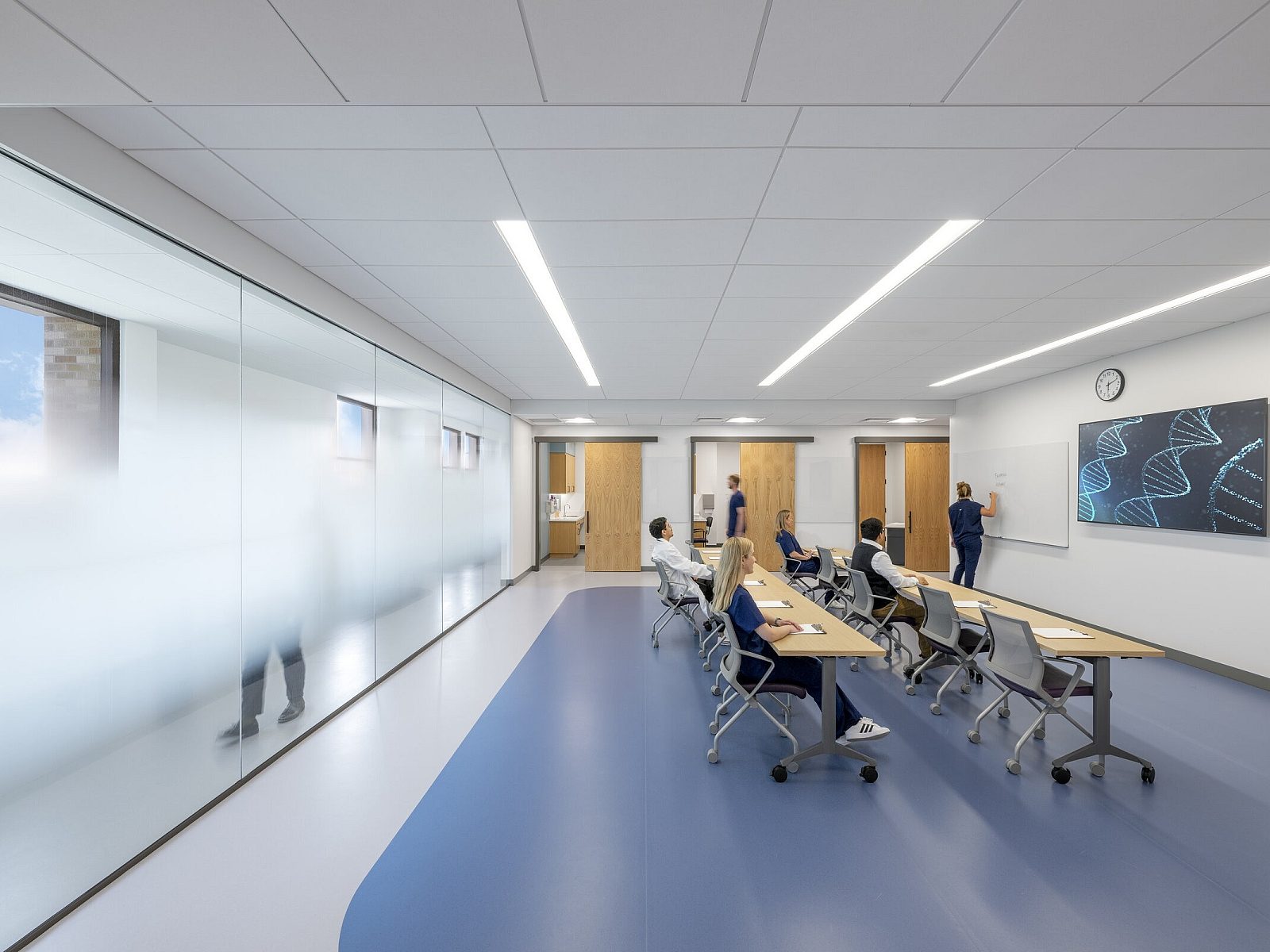Recovering From COVID-19 And Thriving In A Post-Pandemic Economy
COVID-19 changed the modern office. Read our blog on how you can harness the power of design to thrive in a post-pandemic economy.

How Will America’s Cities Recover From COVID-19 And Thrive In A Post-Pandemic Economy?
COVID-19 has had a profound impact on our health and overall well-being. But the pandemic has also altered the material conditions of daily life. Nowhere is this more evident than in the United States’ urban centers.
According to Hugh Kelly, Chair of the Fordham Real Estate Institute, COVID-19 is already forcing city planners to rethink how best to accommodate their citizens’ needs. “In the near-term, it’s clear that things like density, mass transit dependence, [and] high-rise building forms are disadvantageous in the midst of the height of the pandemic,” he writes. “For the short-term, metropolitan areas that are more sprawling, more low-rise, automobile-dependent, and have the ability to have the built-in equivalent of social distancing have the advantage, and that’s probably the case for the next 12 months or so.”
What does this mean for a region like the Dallas-Fort Worth Metroplex — one defined by a mix of characteristics Kelly (and experts like him) identify as advantageous and disadvantageous? Uncertainty obtains, but business leaders across D-FW would benefit from closely following these three emerging trends.
1) Suburban revival
The COVID-19 outbreak prompted many individuals and families to resettle in outlying communities and mid-size cities. Now, companies are following in their footsteps.
A recent survey by the Site Selectors Guild found that 64 percent of corporations currently planning expansions or relocations are leaning toward suburbs. Another 57 percent are targeting mid-size cities such as Boise, Idaho, and Huntsville, Alabama, while 31 percent are feeling the pull of rural areas. Only 10 percent are thinking of setting up shop in large urban centers.
A desire for less density is only one factor motivating companies to reconsider where they’re headquartered. “The weakened economy will put a premium on cost efficiencies in the site selection process and favor lower-cost states,” writes independent location advisor John H. Boyd. “Improving the bottom line on the cost side of the ledger will be far easier than the revenue side for companies for the foreseeable future.”
Boyd anticipates that a more free-floating talent pool will also reinvigorate stalled site selection projects. “The remote workforce, new IT apps, and the rise of new suburban mixed-use developments with an urban feel provide momentum here.”
That “urban feel” is not a minor consideration. But it remains to be seen which aspects of urban living will continue to draw those young, highly educated professionals prized by Fortune 500 companies toward cities. Take walkability. Here, a recent study conducted by Rice University’s Kinder Institute is worth quoting at length.
“In each year between 2013 and 2020, Kinder survey participants have been evenly divided on their preference for walkable urbanism… [However,] the 2020 survey data reflecting the almost even split among residents of the sprawling Houston region regarding their preference for walkable urbanism was collected just before the coronavirus pandemic. It will be interesting to see if the 2021 survey shows a greater number of residents wanting that single-family home with the big yard, which typically is more abundant and affordable in suburban or rural areas. The trade-off — longer commute times — may no longer be an issue for those who continue to work from home on a full- or part-time basis, either because of convenience or reduced risk of coronavirus exposure, or both. And having fewer, if any, shops and restaurants within walking distance won’t feel like such a loss to those who’d rather maintain as much social distance as possible and avoid crowded places.”
If migration patterns within D-FW are any indication, first-ring suburbs such as Irving, Richardson, Garland, Arlington, and North Richland Hills will continue to attract new residents. These communities are more established, less sprawling, relatively affordable, and located within convenient driving distance of the Metroplex’s central business districts and most prominent employers.
2) Industrial strength
Writing recently for D Magazine, entrepreneur Diane Butler observes that “it is a great time to be in industrial real estate, as more and more warehouses are being built to fuel e-commerce needs and retailers’ need for inventory control.”
In D-FW, the demand for square footage of this type is causing developers and landlords alike to look to the region’s south, expanding economic opportunities in some of the region’s more historically underdeveloped (and underserved) communities. As REjournals reports, FedEx has acquired a 776,000-square-foot distribution center near Lancaster, and packager Ball Corp. has signed a lease on a 678,000 square-foot space not far from the intersection of Interstates 20 and 35W in Fort Worth.
In that same article, Steve Trese of CBRE observes that North Texas has witnessed “more new spec development deal activity during the shutdown than the previous 24 months.” However, the pandemic-prompted rise of e-commerce alone cannot fully explain this level of activity. According to Trese, “the organic growth of small industrial business” across D-FW also deserves credit.
This organic growth speaks to the regional economy’s underlying strengths. Primary among them is D-FW’s reputation as an innovation hub. Data collected by CBRE confirms that Dallas is home to almost 180,000 technology professionals — the fifth-largest workforce of its kind in the nation. Meanwhile, although funding has slowed nationwide due to the pandemic, 76 startups in D-FW raised over $580 million in venture capital between January and June 2020. Investors clearly still view North Texas as a software, cybersecurity, and biotech hotspot.
More than macroeconomic data and CRE transaction volumes, statistics such as these give experts like Hugh Kelly hope for America’s major metropolitan areas. As he puts it: “The elements that have made for the most vibrant and the most successful cities … are going to reassert themselves. The vibrancy that comes with businesses and people interacting with each other—that’s what promotes innovation. Innovation produces productivity and productivity produces profits and that’s what attracts businesses and people to places to work.”
3) More modularity
If the American cities of the near future will be less prone to overcrowding, more horizontal than vertical, and smarter, they will also be more easily reconfigurable. The health and wellness of American workers depend upon as much.
Already, leading architecture and design firms are employing new planning methodologies. The polycentric model is among the most popular of these approaches. Polycentrism does not abandon density or public spaces altogether. Instead, it aims to manage both more thoughtfully.
A polycentric city is one in which “self-sufficient districts are distributed across cities and function like urban villages,” according to Andre Brumfield and Carlos Cubillos of Gensler. “Dense cities can better embody community, wellness, and resilience through redundancy, mix of uses and generations, and decentralization to help residents both satisfy basic needs and live fuller, healthier lives.”
In short, the city of the near future will include what Tim Dixon, Chair in Sustainable Futures in the Built Environment at The University of Reading, calls “a strong participatory element.” Therefore, the principles of effective office design can — and should — be applied to those urban areas in which many so many workplaces are located. Diverse spaces, equal and inclusive access, adaptability, clean air, and organic (or green) amenities that support holistic notions of human wellness are all features that are likely to move out from buildings and into the city proper.
Modular construction promises to play a significant role in giving cities a polycentric makeover, both inside and out. As Gensler’s Nayan Parekh observes, “Fabricating and assembling building components offsite in contained warehouses could prove to be a healthier, safer, and quicker alternative to traditional construction.”
Modular construction is ultimately more versatile, sustainable, and durable than conventional alternatives. COVID-19 has exposed vulnerabilities in the massively complicated systems that govern the global circulation of essential commodities, liquidity, information, and human expertise. Simultaneously, the pandemic has renewed our appreciation for all that is local. As Parekh asserts, “[once we] emerge from our homes and begin to re-engage with our communities, the one thing we will be looking for is an underlying trust in the places and spaces into which we’re emerging.”
Cities like Dallas and Fort Worth can be those places and create those spaces, provided leaders in both the public and private sectors apply the admittedly hard lessons 2020 has taught us.
Give your company’s people extraordinary confidence in their workplace. Contact us today to learn how we can help you harness the power of design, the benefits of quality office furniture, and the efficiencies of modular interior construction in your working, learning, and healing environments.















